Related Research Articles

Carl Andrew Spaatz, nicknamed "Tooey", was an American World War II general. As commander of Strategic Air Forces in Europe in 1944, he successfully pressed for the bombing of the enemy's oil production facilities as a priority over other targets. He became Chief of Staff of the newly formed United States Air Force in 1947.

Wettin is a small town belonging to the municipality of Wettin-Löbejün in the Saale District of Saxony-Anhalt (Saxony-Ascania), Germany. It is situated on the River Saale, just north of Halle. It is known for Wettin Castle, the ancestral seat of the House of Wettin, the former ruling dynasty of Saxony, Poland, the United Kingdom, Belgium, and Bulgaria. The town and its name are of Slavic origin.
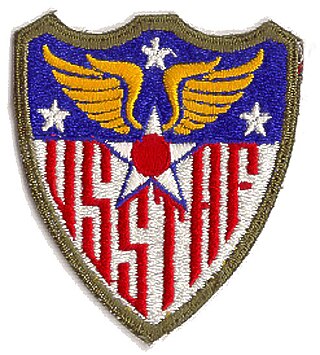
The United States Strategic Air Forces in Europe (USSTAF) was a formation of the United States Army Air Forces. It became the overall command and control authority of the United States Army Air Forces in the European theater of World War II.
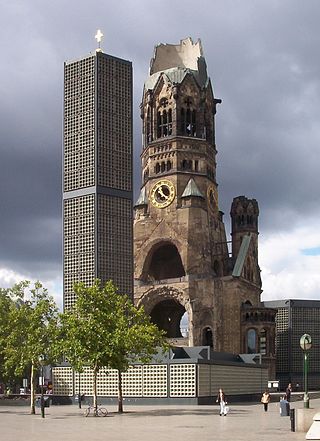
Berlin, the capital of Nazi Germany, was subject to 363 air raids during the Second World War. It was bombed by the RAF Bomber Command between 1940 and 1945, the United States Army Air Forces' Eighth Air Force between 1943 and 1945, and the French Air Force in 1940 and between 1944 and 1945 as part of the Allied campaign of strategic bombing of Germany. It was also attacked by aircraft of the Red Air Force in 1941 and particularly in 1945, as Soviet forces closed on the city. British bombers dropped 45,517 tons of bombs, while American aircraft dropped 22,090.3 tons. As the bombings continued, more and more people fled the city. By May 1945, 1.7 million people had fled.
Aphrodite was the World War II code name of a United States Army Air Forces operation to use worn out Boeing B-17 Flying Fortress and Consolidated PB4Y bombers as radio controlled flying bombs against bunkers and other hardened or reinforced enemy facilities. A parallel project by the United States Navy was codenamed Anvil. The missions were not generally successful, and the intended targets in Europe were either overrun by the ground advance of Allied troops or disabled by conventional attacks by aircraft.
The Transportation Plan was a plan for strategic bombing during World War II against bridges, rail centres, including marshalling yards and repair shops in France with the goal of limiting the German military response to the invasion of France in June 1944.
Big Week or Operation Argument was a sequence of raids by the United States Army Air Forces and RAF Bomber Command from 20 to 25 February 1944, as part of the Combined Bomber Offensive against Nazi Germany. The planners intended to attack the German aircraft industry to lure the Luftwaffe into a decisive battle where the Luftwaffe could be damaged so badly that the Allies would achieve air superiority and would ensure success of the Normandy landings later in 1944.
A synthetic rubber is an artificial elastomer. They are polymers synthesized from petroleum byproducts. About 32 million metric tons of rubbers are produced annually in the United States, and of that amount two thirds are synthetic. Synthetic rubber, just like natural rubber, has many uses in the automotive industry for tires, door and window profiles, seals such as O-rings and gaskets, hoses, belts, matting, and flooring. They offer a different range of physical and chemical properties which can improve the reliability of a given product or application. Synthetic rubbers are superior to natural rubbers in two major respects: thermal stability, and resistance to oils and related compounds. They are more resistant to oxidizing agents, such as oxygen and ozone which can reduce the life of products like tires.
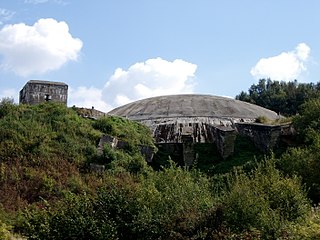
Crossbow was the code name in World War II for Anglo-American operations against the German long range reprisal weapons (V-weapons) programme. The primary V-weapons were the V-1 flying bomb and V-2 rocket, which were launched against Britain from 1944 to 1945 and used against continental European targets as well.
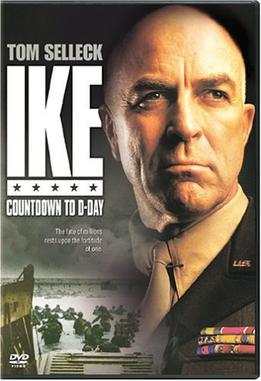
Ike: Countdown to D-Day is a 2004 American made-for-television historical war drama film originally aired on the American television channel A&E, directed by Robert Harmon and written by Lionel Chetwynd. Countdown to D-Day was filmed entirely in New Zealand with the roles of British characters played by New Zealanders; the American roles were played by Americans.
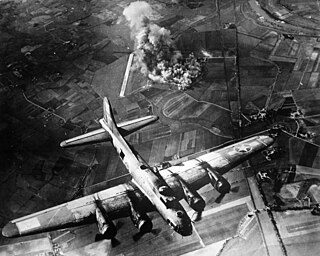
The Combined Bomber Offensive (CBO) was an Allied offensive of strategic bombing during World War II in Europe. The primary portion of the CBO was directed against Luftwaffe targets which was the highest priority from June 1943 to 1 April 1944. The subsequent highest priority campaigns were against V-weapon installations and petroleum, oil, and lubrication (POL) plants. Additional CBO targets included railyards and other transportation targets, particularly prior to the invasion of Normandy and, along with army equipment, in the final stages of the war in Europe.

The Defence of the Reich is the name given to the strategic defensive aerial campaign fought by the Luftwaffe of Nazi Germany over German-occupied Europe and Germany during World War II. Its aim was to prevent the destruction of German civilians, military and civil industries by the Western Allies. The day and night air battles over Germany during the war involved thousands of aircraft, units and aerial engagements to counter the Allied strategic bombing campaign. The campaign was one of the longest in the history of aerial warfare and with the Battle of the Atlantic and the Allied Blockade of Germany was the longest of the war. The Luftwaffe fighter force defended the airspace of German-occupied territory against attack, first by RAF Bomber Command and then against the United States Army Air Forces (USAAF) in the Combined Bomber Offensive.

The Allied oil campaign of World War II pitted the RAF and the USAAF against facilities supplying Nazi Germany with petroleum, oil, and lubrication (POL) products. It formed part of the immense Allied strategic bombing effort during the war. The targets in Germany and in Axis-controlled Europe included refineries, synthetic-fuel factories, storage depots and other POL-infrastructure.
Allied bombing of the oil campaign targets of World War II included attacks on Nazi Germany oil refineries, synthetic oil plants, storage depots, and other chemical works. Natural oil was available in Northwestern Germany at Nienhagen, Rietberg (20%—300,000), and Heide (300,000) and refineries were mainly at Hamburg and Hannover. Refineries in France, Holland, and Italy (54)—mainly coastal plants for ocean-shipped crude—were within Allied bombing range and generally unused by Germany. Even before the war, Germany was dependent on foreign sources for an adequate supply of oil. The annexations of Austria and the Sudetenland ; the "campaigns in Norway, Holland, Belgium, and France…and imports from the Soviet Union provided significant wartime POL imports to Nazi Germany. Firms that operated oil facilities included Deutsche Erdöl-Aktiengesellschaft, Brabag, Fanto, and I.G. Farbenindustrie.
The oil campaign chronology of World War II lists bombing missions and related events regarding the petroleum/oil/lubrication (POL) facilities that supplied Nazi Germany or those Germany tried to capture in Operation Edelweiss.

The Mediterranean Allied Air Forces (MAAF) was the major Allied air force command organization in the Mediterranean theater from mid-December 1943 until the end of the Second World War.
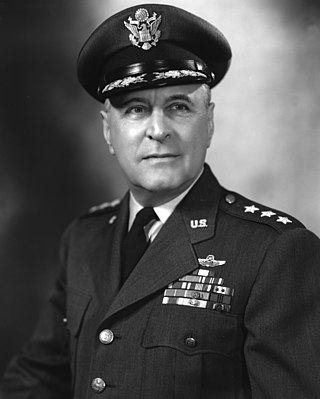
The Air War Plans Division (AWPD) was an American military organization established to make long-term plans for war. Headed by Harold L. George, the unit was tasked in July 1941 to provide President Franklin D. Roosevelt with "overall production requirements required to defeat our potential enemies." The plans that were made at the AWPD eventually proved significant in the defeat of Nazi Germany.
Continental Air Forces (CAF) was a United States Army Air Forces major command, active 1944–1946. It was tasked with combat training of bomber and fighter personnel, and for Continental United States (CONUS) air defense after the Aircraft Warning Corps and Ground Observer Corps were placed in standby during 1944. CAF conducted planning for the postwar United States general surveillance radar stations, and the planning to reorganize to a separate USAF was for CAF to become the USAF Air Defense Command On 21 March 1946, CAF headquarters personnel and facilities at Bolling Field, along with 1 of the 4 CAF Air Forces became Strategic Air Command. US Strategic Air Forces of WWII, e.g., Eighth Air Force and Fifteenth Air Force, transferred later to SAC. Most of the CAF airfields that had not been distributed to other commands when SAC was activated were subsequently transferred to Air Defense Command, Tactical Air Command, and Air Materiel Command between March 1946 and March 1947.

The Western Allied Campaign in Romania consisted of war declarations and aerial operations during the Second World War by eight Western Allied countries against Romania which itself was primarily engaged on the Eastern Front in fighting against the Soviet Union.

The air war during Operation Overlord, alongside the Battle of Britain, the carrier battles in the Pacific and the strategic air war against the German Reich, was one of the most significant air battles of the Second World War. It took place between April and August 1944 in the course of the Allied landings in northern France.
References
- Plan for Completion of Combined Bomber Offensive Copy I, Dwight D. Eisenhower Presidential Library: Smith, Walter Bedell: Collection of World War II Documents, 1941-1945; Box No.: 48: HQ, U.S.S.T.A.F, 5 March 1944
{{citation}}: CS1 maint: location (link) - Spaatz, Carl (5 March 1944), ::SUBJECT: Plan for Completion of Combined Bomber Offensive ::TO: General Dwight D. Eisenhower, Supreme Allied Commander, Headquarters, ETOUSA., Headquarters United States Strategic Air Forces in Europe APO 633: Office of the Commanding General
{{citation}}: CS1 maint: location (link) - Williamson, Charles C.; Hughes, Richard D.; Cabell, C. P.; Nazarro, J. J.; Bender, F. P.; Crigglesworth, W. J. (5 March 1944), Plan for Completion of Combined Bomber Offensive, pp. 5 pages + Appendices A–G & Supplement
- "Appendix A: Fighter and Ball Bearing Production", Plan for Completion of Combined Bomber Offensive
- "Appendix B: Petroleum", Plan for Completion of Combined Bomber Offensive
- "Appendix C: Rubber and Tires", Plan for Completion of Combined Bomber Offensive
- "Appendix D: ...major bomber assembly plants...", Plan for Completion of Combined Bomber Offensive (1 page)
- "Appendix E: Transport", Plan for Completion of Combined Bomber Offensive
- "Appendix F: Present Condition of Point Blank Systems", Plan for Completion of Combined Bomber Offensive
- "Appendix G: Computation of Report", Plan for Completion of Combined Bomber Offensive
- "Supplement: Reexamination of Previously Recommended Target Systems", Plan for Completion of Combined Bomber Offensive
- "Part 1: Prospect for Ending War by Air Attack Against German Morale", Plan for Completion of Combined Bomber Offensive
- "Part 2: Target Potentialities of Axis European Transport -- March 1944", Plan for Completion of Combined Bomber Offensive
- "Part 3: Target Potentialities of Submarines -- March 1944", Plan for Completion of Combined Bomber Offensive (2 pages)
- "Part 9: Target Potentialities of Bomber Aircraft -- March 1944", Plan for Completion of Combined Bomber Offensive
- "Part 10: Target Potentialities of Oil -- March 1944", Plan for Completion of Combined Bomber Offensive
- "Letter to Marshal Portal": tbd (not in Box 48)
- "Planning Directive, dtd 12 Feb 44": Anderson, F. L. (Deputy Commander, Operations (12 February 1944), SUBJECT: Planning Directive
{{citation}}: CS1 maint: multiple names: authors list (link)
- Turner, Mark (6 March 1944), Ltr from Ministry of Economic Warfare, dated 6 Mar 44 to General [E. P.] Curtis, Lansdowne House, Berkeley Square W. 1.: Ministry of Economic Warfare
{{citation}}: CS1 maint: location (link) - Turner, Smith D. (Petroleum Attache) (March 6, 1944), Ltr from Mission for Economic Affairs, dtd 6 Mar 44, American Embassy, Mission for Economic Affairs, 1 Grosvenor Square, London, W. 1.: The Foreign Service of the United States of America
{{citation}}: CS1 maint: location (link)